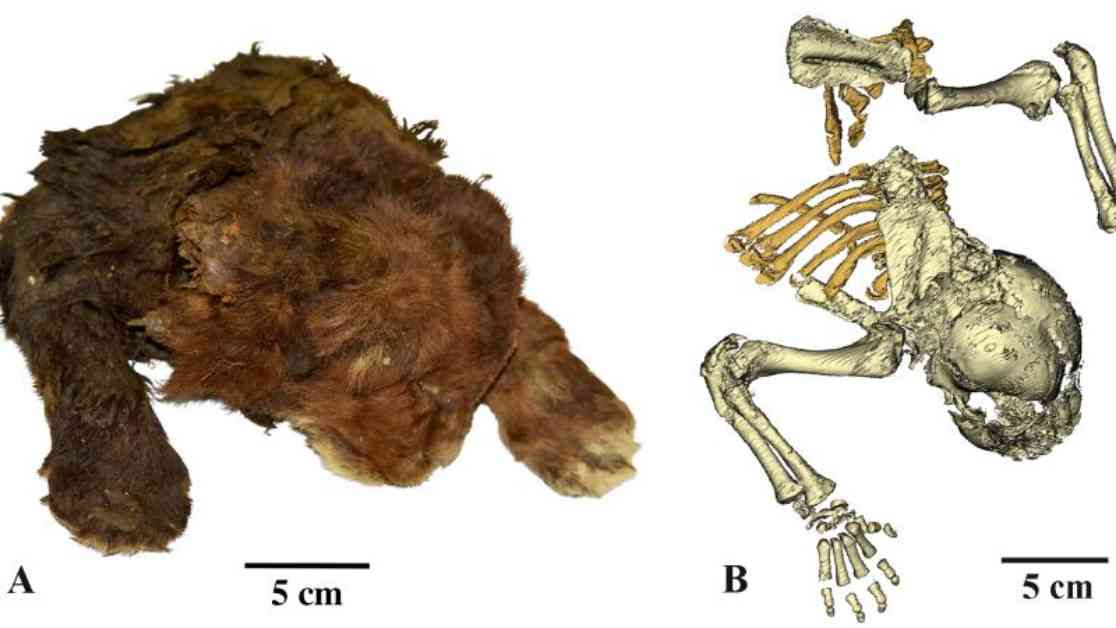A remarkable discovery in Siberia has excited paleontologists as they uncovered a mummified ice age cub, believed to be the first-ever saber-toothed cat mummy found. This incredible find offers a glimpse into the appearance of these long-extinct predators, shedding light on their unique features and hunting style.
Scientists were amazed by the exceptional preservation of the mummy, which displayed intact skin, fur, and even toes. The cub’s dark brown fur, measuring about 0.8 to 1.2 inches long, was described as very thick and surprisingly soft. Lead study author Alexey V. Lopatin expressed his excitement at witnessing the life appearance of such an intriguing predator as the saber-toothed cat.
The mummy belonged to the saber-toothed cat species Homotherium latidens, a rare find in Asia, with previous discoveries limited to fossilized bones in other regions. The cub’s preservation in permafrost near the Badyarikha River allowed for detailed examination of its anatomy, revealing unique characteristics that set it apart from modern lion cubs.
Notably, the mummified cub’s forelimbs and paws were remarkably well-preserved, offering insights into its physical features and potential hunting techniques. Comparisons with lion cub anatomy highlighted significant differences, such as a darker coat, smaller ears, and longer forelimbs. Analysis of the mummy’s paw shape suggested similarities to a bear’s paw, indicating a possible reliance on forearms for hunting and immobilizing prey.
The discovery of this saber-toothed cat mummy not only provides valuable information about an extinct species but also offers a rare glimpse into the evolutionary history of the feline group. By studying the mummy’s anatomy and genetic makeup, scientists hope to gain a deeper understanding of the Homotherium genus and its place in the broader cat family tree.
Paleontologists and researchers are eager to conduct further analysis on the mummy, including DNA extraction and detailed skeletal examination. This unique find has the potential to reshape our understanding of saber-toothed cats and their role in ancient ecosystems, opening up new avenues for scientific exploration and discovery.













